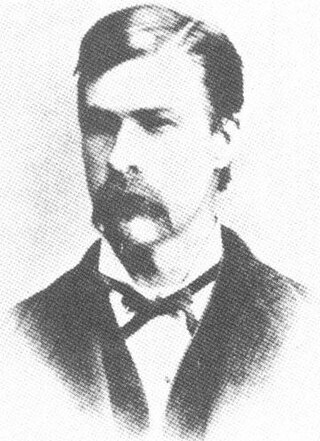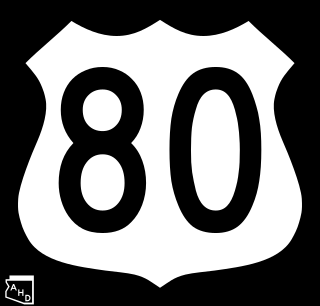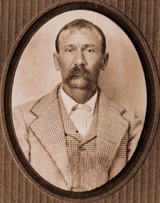
The gunfight at the O.K. Corral was a thirty-second gunfight between lawmen led by Virgil Earp and members of a loosely organized group of outlaws called the Cowboys that occurred at about 3:00 p.m. on Wednesday, October 26, 1881, in Tombstone, Arizona, United States. It is generally regarded as the most famous gunfight in the history of the American Old West.

Virgil Walter Earp was both deputy U.S. Marshal and Tombstone, Arizona, City Marshal when he led his younger brothers Wyatt and Morgan, and Doc Holliday, in a confrontation with outlaw Cowboys at the Gunfight at the O.K. Corral on October 26, 1881. They killed brothers Tom and Frank McLaury and Billy Clanton. All three Earp brothers had been the target of repeated death threats made by the Cowboys who were upset by the Earps' interference in their illegal activities. All four lawmen were charged with murder by Ike Clanton, who had run from the gunfight. During a month-long preliminary hearing, Judge Wells Spicer exonerated the men, concluding they had been performing their duty.

The Arizona Rangers is a noncommissioned civilian auxiliary that supports law enforcement in the state of Arizona.

Morgan Seth Earp was an American sheriff and lawman. He served as Tombstone, Arizona's Special Policeman when he helped his brothers Virgil and Wyatt, as well as Doc Holliday, confront the outlaw Cochise County Cowboys in the Gunfight at the O.K. Corral on October 26, 1881. All three Earp brothers had been the target of repeated death threats made by the Cowboys who were upset by the Earps' interference in their illegal activities. The lawmen killed Cowboys Tom and Frank McLaury and Billy Clanton. All four lawmen were charged with murder by Billy's older brother, Ike Clanton, who had run from the gunfight. During a month-long preliminary hearing, Judge Wells Spicer exonerated the men, concluding they had been performing their duty.

William Brocius, better known as Curly Bill Brocius, was an American gunman, rustler and an outlaw Cowboy in the Cochise County area of the Arizona Territory during the late 1870s and early 1880s. His name is likely an alias or nickname, and some evidence links him to another outlaw named William "Curly Bill" Bresnaham, who was convicted of an 1878 attempted robbery and murder in El Paso, Texas.

Pete Spence was a small-time criminal known for his association with outlaw Cowboys Frank and Tom McLaury, and Ike and Billy Clanton, of Tombstone, Arizona Territory. Spence was also a suspect in the assassination of Morgan Earp. His wife Marietta Duarte testified that Spence and several friends had talked about killing Morgan, but the judge ruled her testimony inadmissible. Spence was first suspected of robbery in 1878 in Goliad County, Texas. He was suspected of stealing mules and later a suspect in a stagecoach robbery outside Bisbee, Arizona. While a deputy sheriff, he pistol-whipped and killed a man for which he served 18 months of a five-year term before the governor pardoned him.

The Earp Vendetta Ride was a deadly search by a federal posse led by Deputy U.S. Marshal Wyatt Earp for a loose confederation of outlaw "Cowboys" they believed had ambushed his brothers Virgil and Morgan Earp, maiming the former and killing the latter. The two Earp brothers had been attacked in retaliation for the deaths of three Cowboys in the Gunfight at the O.K. Corral on October 26, 1881. From March 20 to April 15, 1882, the federal posse searched southeast Cochise County, Arizona Territory for the men they believed were responsible for the attacks on Virgil and Morgan. Several suspects had been identified and were charged, but were soon released by the court, owing in some cases to legal technicalities and in others to the strength of alibis provided by Cowboy confederates. Wyatt hoped that the legal system would bring the Cowboys to justice, but after suspects in both ambushes were freed, Wyatt resolved to take matters into his own hands.

Frank C. Stilwell was an outlaw Cowboy who killed at least two men in Cochise County during 1877–82. Both killings were considered to have been self-defense. For four months he was a deputy sheriff in Tombstone, Arizona Territory for Cochise County Sheriff Johnny Behan. Stilwell owned interests in several mines and various businesses, including a saloon, a wholesale liquor business, a stage line, and at his death livery stables in Charleston and Bisbee. He was also a partner in a Bisbee-area saloon with ex-Texas Ranger Pete Spence.

Thomas Harbo Rynning was an officer in the United States Army who served with Theodore Roosevelt's Rough Riders during the Spanish–American War. He was also the captain of the Arizona Rangers, warden of Yuma Territorial Prison, and a United States Marshal in San Diego, California.

Harry Cornwall Wheeler was an Arizona lawman who was the third captain of the Arizona Rangers, as well as the sheriff of Cochise County, serving from 1912 into 1918. He is known as the lead figure in the illegal mass kidnapping and deportation of some 1200 miners and family members, many of them immigrants, from Bisbee, Arizona to New Mexico in 1917. Beginning on July 12, 1917, he took total control of the town of Bisbee, controlling access and running kangaroo courts that deported numerous people.

Tom McLaury was an American outlaw. He and his brother Frank owned a ranch outside Tombstone, Arizona, Arizona Territory during the 1880s. He was a member of a group of outlaws Cowboys and cattle rustlers that had ongoing conflicts with lawmen Wyatt, Virgil, and Morgan Earp. The McLaury brothers repeatedly threatened the Earps because they interfered with the Cowboys' illegal activities. On October 26, 1881, Tom and Frank were both killed in the Gunfight at the O.K. Corral in Tombstone, Arizona Territory. The Tombstone shootout was his only gunfight.
Jeff Kidder was an American lawman in the closing days of the American Old West. He was most noted for his service with the Arizona Rangers.

U.S. Route 80 (US 80) also known as the Ocean-to-Ocean Highway, the Broadway of America and the Jefferson Davis Memorial Highway was a major transcontinental highway that existed in the U.S. state of Arizona from November 11, 1926, to October 6, 1989. At its peak, US 80 traveled from the California border in Yuma to the New Mexico state line near Lordsburg. US 80 was an important highway in the development of Arizona's car culture. Like its northern counterpart, US 66, the popularity of travel along US 80 helped lead to the establishment of many unique road side businesses and attractions, including many iconic motor hotels and restaurants. US 80 was a particularly long highway, reaching a length of almost 500 miles (800 km) within the state of Arizona alone for most of the route's existence.

The Battleground Gunfight, also known as the Battleground Shootout, was a gunfight between a posse of American lawmen and the Smith Gang. It was fought on October 8, 1901, within Arizona Territory's Fort Apache Indian Reservation, at a clearing in the forest known today as the "Battleground". Nine Arizona Rangers and deputies caught up with the cattle rustler Bill Smith and his gang. During a long exchange of gunfire that followed, Ranger Carlos Tafolla and Deputy Bill Maxwell were killed and one or two of the outlaws may have been wounded. In the end, the Smith Gang escaped the posse and fled into Mexico.

The Gleeson gunfight, or the Gleeson shootout, was one of the last gunfights in the Old West, having occurred during the transition period between the "Old" and the "New." On March 5, 1917, the sheriff of Cochise County, Harry C. Wheeler, and his deputy, Lafe Gibson, were ambushed by a gang of Mexican alcohol smugglers near the town of Gleeson, Arizona. During the battle that followed, Wheeler and Gibson fought off the attackers and confiscated their alcohol, wounding at least one man in the process.

The Fairbank train robbery occurred on the night of February 15, 1900, when some bandits attempted to hold up a Wells Fargo express car at the town of Fairbank, Arizona. Although it was thwarted by Jeff Milton, who managed to kill "Three Fingered Jack" Dunlop in an exchange of gunfire, the train robbery was unique for being one of the few to have occurred in a public place and was also one of the last during the Old West period.

Boothill Graveyard is a small graveyard of at least 250 interments located in Tombstone, Cochise County, Arizona. Also known as the "Old City Cemetery", the graveyard was used after 1883 only to bury outlaws and a few others. It had a separate Jewish cemetery, which is nearby.

Pantano is a ghost town located in eastern Pima County, Arizona, between Benson and Vail. Access is via the Marsh Station Road interchange on I-10. It was established as a small railroad town with the arrival of the Southern Pacific in 1880, supplanting the earlier Ciénega station that was located to the west of Pantano.

The O.K. Corral hearing and aftermath was the direct result of the 30-second Gunfight at the O.K. Corral in Tombstone, Arizona Territory, on October 26, 1881. During that confrontation, Deputy U.S. Marshal and Tombstone Town Marshal Virgil Earp, Assistant Town Marshal Morgan Earp, and temporary deputy marshals Wyatt Earp and Doc Holliday shot and killed Billy Clanton, and Tom and Frank McLaury. Billy's brother Ike, who had repeatedly threatened to kill the Earps for some time, had been present at the gunfight but was unarmed and fled. As permitted by territory law, he filed murder charges against the Earps and Doc Holliday on October 30.

Bill Downing a.k.a. William F. Downing was a notorious outlaw during the Wild West era in Arizona. Downing had fled from the Texas Rangers posse who was after him when he came to Arizona. In Arizona, he was involved in the killing of William S. “Slim” Traynor and in various train robberies including the robbery of the Train Depot in the town of Cochise. Downing was so unpopular that even members of his gang couldn't stand him.




















